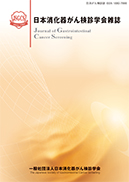Volume 58, Issue 6
Displaying 1-9 of 9 articles from this issue
- |<
- <
- 1
- >
- >|
Prefatory Note
-
2020 Volume 58 Issue 6 Pages 969
Published: November 13, 2020
Released on J-STAGE: November 13, 2020
Download PDF (110K)
Report from the Chair of the 59th Annual Meeting
-
2020 Volume 58 Issue 6 Pages 970-971
Published: November 13, 2020
Released on J-STAGE: November 13, 2020
Download PDF (209K)
Review Article
-
2020 Volume 58 Issue 6 Pages 972-982
Published: November 13, 2020
Released on J-STAGE: November 13, 2020
Download PDF (494K)
Original article
-
2020 Volume 58 Issue 6 Pages 983-995
Published: November 13, 2020
Released on J-STAGE: November 13, 2020
Download PDF (513K) -
2020 Volume 58 Issue 6 Pages 996-1003
Published: November 13, 2020
Released on J-STAGE: November 13, 2020
Download PDF (345K) -
2020 Volume 58 Issue 6 Pages 1004-1014
Published: November 13, 2020
Released on J-STAGE: November 13, 2020
Download PDF (569K) -
2020 Volume 58 Issue 6 Pages 1015-1024
Published: November 13, 2020
Released on J-STAGE: November 13, 2020
Download PDF (1141K) -
2020 Volume 58 Issue 6 Pages 1025-1036
Published: November 13, 2020
Released on J-STAGE: November 13, 2020
Download PDF (624K)
Case Report
-
2020 Volume 58 Issue 6 Pages 1037-1042
Published: November 13, 2020
Released on J-STAGE: November 13, 2020
Download PDF (835K)
- |<
- <
- 1
- >
- >|
